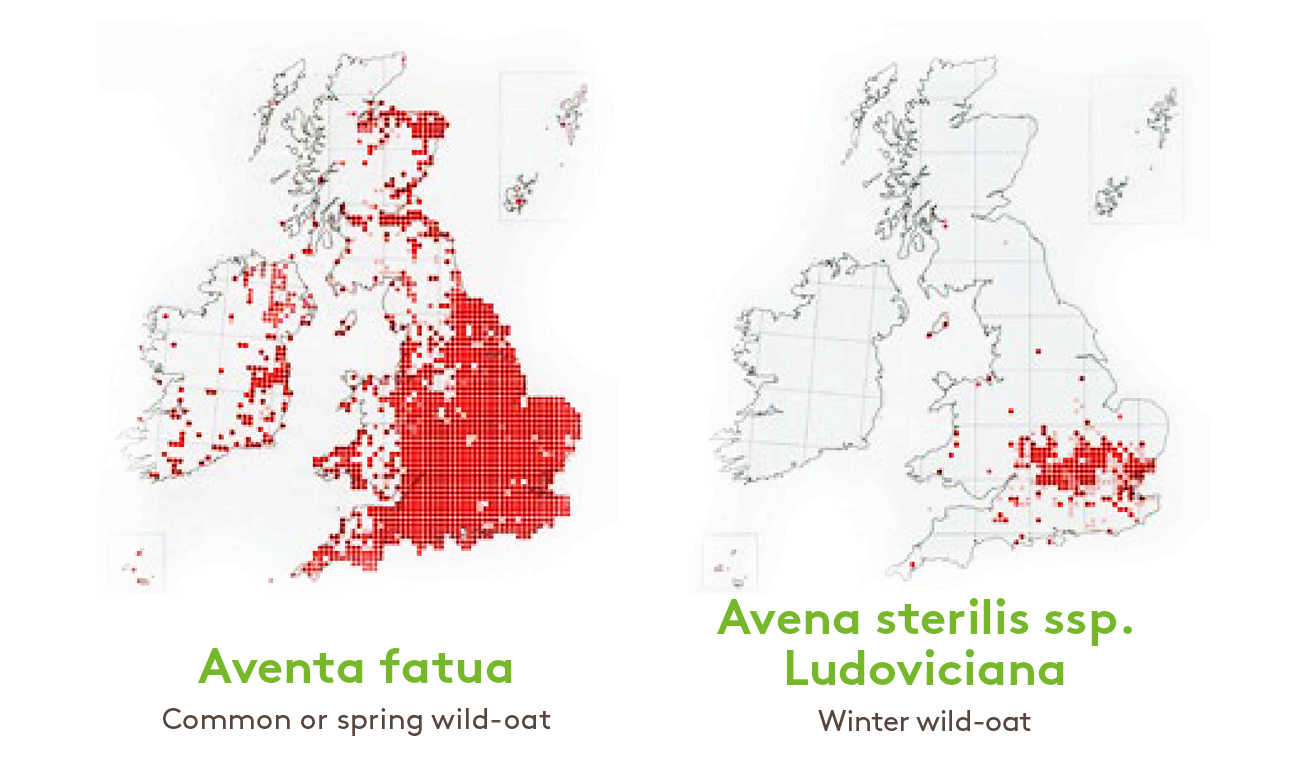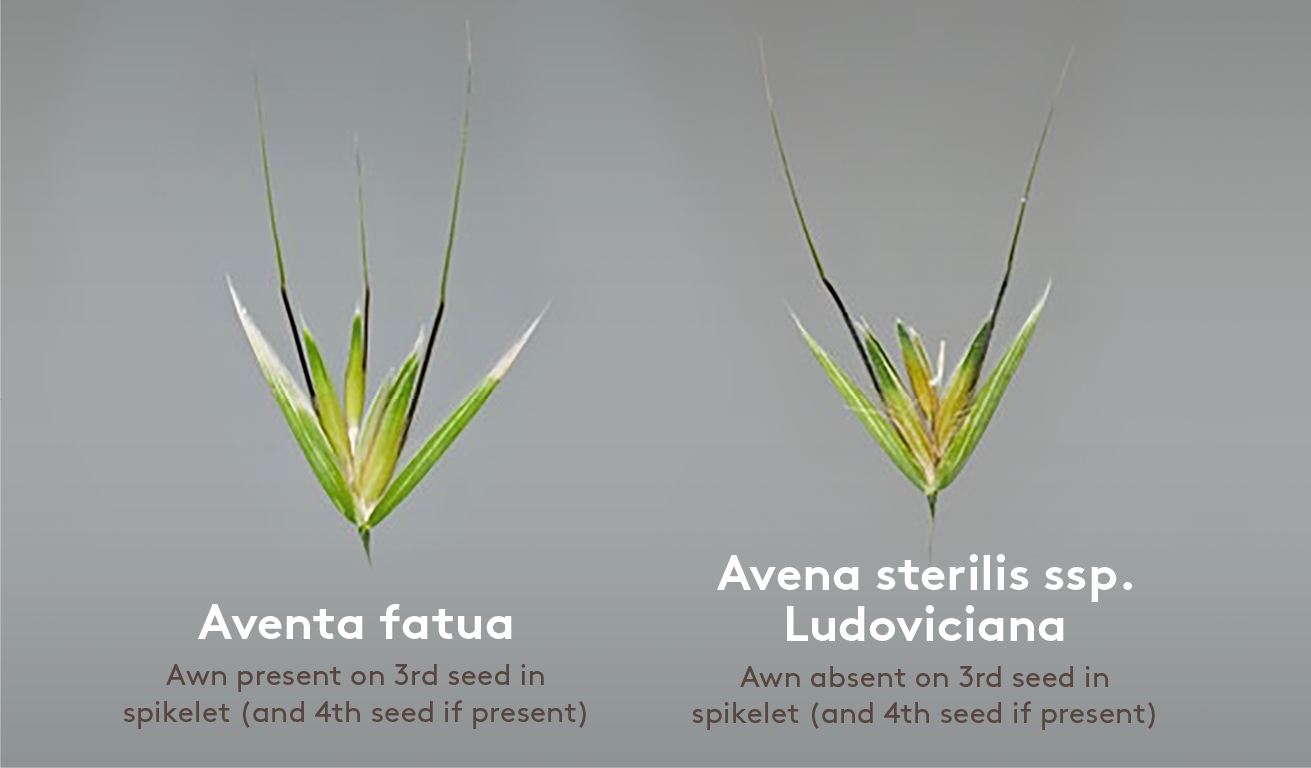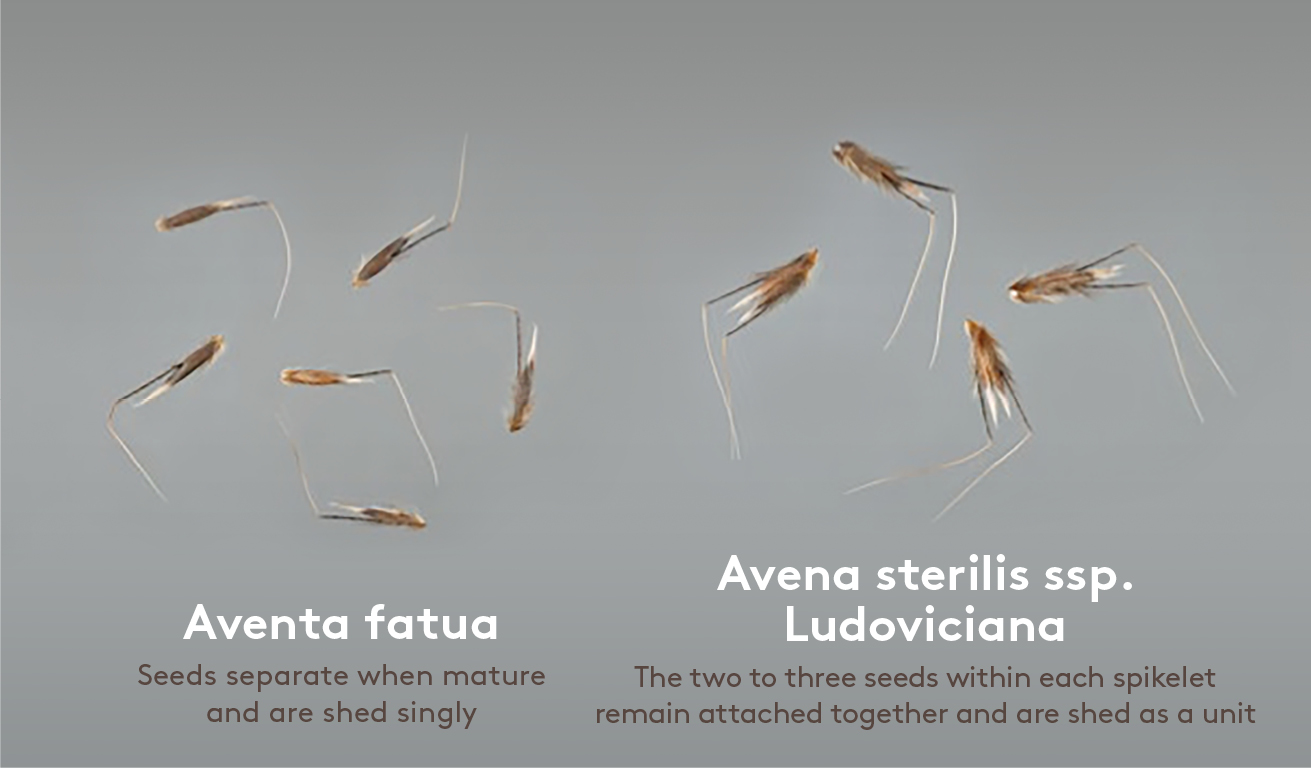
Time to check your wild oats

Two species of wild oats are prevalent in the UK: common or spring wild-oat (Avena fatua) and winter wild-oat (Avena sterilis ssp. ludoviciana). Both species are exceptionally competitive, with just one plant per square metre able to reduce winter cereal yields by up to 1%. The ability to differentiate between the two species and take suitable preventative action is therefore crucial to safeguarding crop yields, especially as the two species germinate at difference times of the year and therefore require distinct control tactics.
Unfortunately, distinguishing which species of wild-oat is present within a crop is tricky during early growth stages as the two species are almost identical until their panicles have emerged. However, with most crops now well-advanced, it’s the ideal time to make a definitive identification and to formulate an effective control programme for each affected area.

Common or spring wild-oat (Avena fatua)
- Prevalent throughout England. Found sporadically in Scotland and Wales
- 55% overall UK coverage
- Germinates mainly in the spring (March/April) but with a variable and sometimes considerable amount of autumn germination (September/October)
Winter wild-oat (Avena sterilis ssp. ludoviciana)
- Less common and mainly found within 50-100 miles of Oxford where it was first recorded in the wild in 1910
- 10% overall UK coverage
- Probably under-reported due to confusion with Avena fatua
- Germinates mainly in the autumn and winter (from October to early March) and is more tolerant of freezing conditions than Avena fatua.
Why does identification of species matter?
Seedling emergence patterns and winter hardiness differ between the two species, so correct identification can help in herbicide decision-making: as a general rule, Avena sterilis ssp. ludoviciana is considered the more challenging species to control thanks to its autumn germinating habit which means plants are bigger and more established than Aventa fatua when spring herbicides are applied.
Identification after panicles have emerged

It is possible to distinguish between the two species by inspecting their panicles for the presence or absence of an awn on the third seed in a spikelet:
- The first and second seeds in the spikelets of both species are always awned.
- A fully developed 3rd seed is often not present – look at the biggest spikelets on the biggest plants to increase the chances of success.
- The presence or absence of awns can often be assessed on vestigial (not fully developed) seeds (see second photo above).
Identification at seed shedding

If you don’t manage to positively identify which species is present at the post-panicle emergence timing, it is possible to distinguish between the two species at a later date by determining whether the plant’s seeds remain attached to each other or separate at shedding.
- The best time for this assessment in wheat crops is in late July or early August when most seed shedding occurs
- This characteristic is most easily assessed by holding panicles inside a polythene bag and shaking vigorously. Samples collected in this manner will consist almost entirely of seeds, with no stalks, chaff or other debris.
- Unripe seeds of both species will tend to remain attached together, so this identification method is less suitable for use prior to seed shedding.
Top tips for effective eradication
To ensure your wild-oat eradication programme is as effective as possible follow these simple top tips:
- Identify which species of wild-oat is present either at the panicle emerged stage or seed shedding stage
- Check several patches of wild oats in the field: oats are self-pollinating and species tend to cluster, so one clump might be spring and another might be winter wild oats
- Any herbicides applied may or may not impact on the vigour of wild oats: therefore, don’t rely on the relative growth of surviving plants as an indication of species – some plants may seem very tall at this time of year while in a different scenario might appear less forward.
More information
For more information, please visit our wild-oats resource page.


